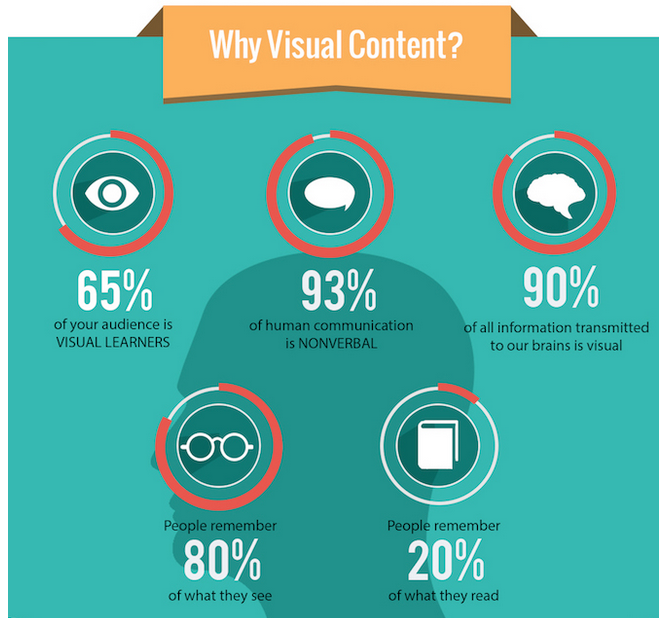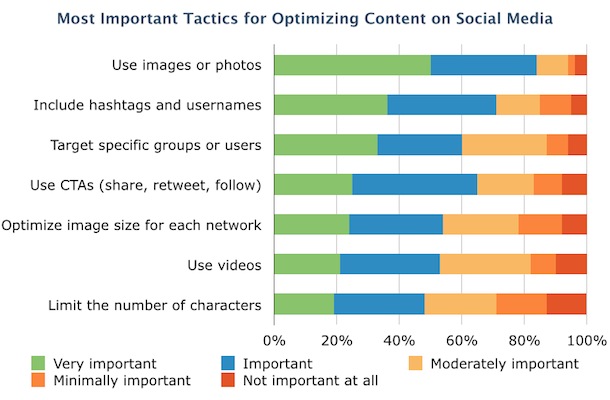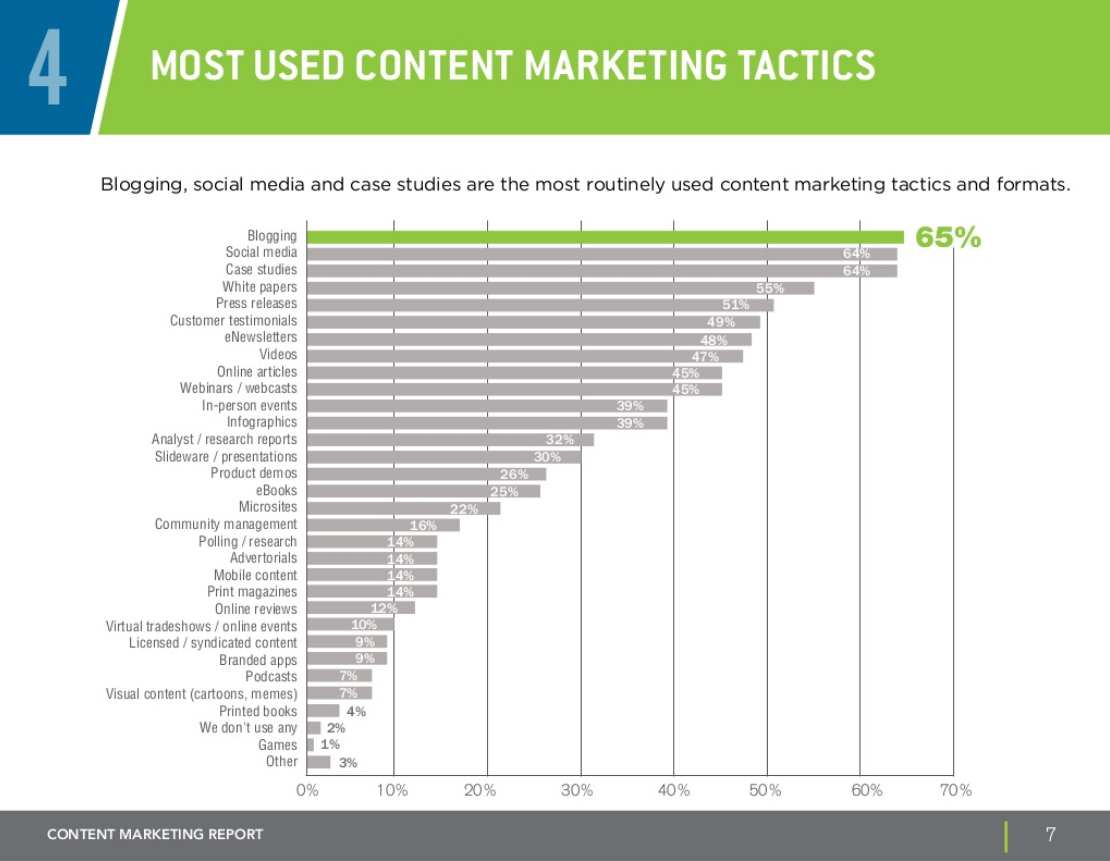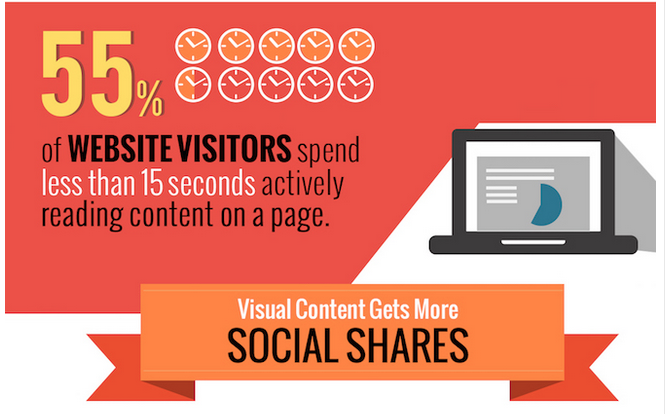
The creation of a strong brand begins with the ability to attract more customers and involve them into innovative experiences. There are two key pillars for an amazing brand experience: technology and content.
Content marketing is not a new concept but it’s now more important than ever to improve customer engagement. And the most effective way to build a compelling brand story is to use visual content. Stay Epic, that’s the rule!
The prominence of content marketing in business strategies is changing the digital customer experience landscape, forcing companies to change their role and act as publishers. Within the framework of your content strategy, then, there is one particular element becoming more and more important: visual content.

WHY VISUAL CONTENT?
If you have noticed a significant increase in visual content across social media and blogs, it’s not a coincidence. It’s a fact that over the last months every major social network - including Facebook, Twitter, LinkedIn - have raised the value of visual content into their feed streams. Be it owned content or social advertising, images are now crucial for any company looking to connect with customers and drive deeper engagement.

“90 percent of the information that enters the brain is visual”: it’s not just science, it’s business. Recent studies reveal that brands leveraging visual content are seeing significant increases in their traffic, conversion rates and inbound acquisition results.
The following graphics - gathered by Hubspot - perfectly show why today content marketing equals visual marketing. Images, infographics, logos, headers and photos are the most important tactic in optimizing social media posts:

The popularity of visual coincides with a lower interest for traditional whitepapers as premium content marketing format. Textual content is still one of the most used tactis for B2B strategies, but research shows an evident decline in favor of more interactive, easily digestible formats - such as video or games:

IS YOUR VISUAL CONTENT EFFECTIVE?
This is the first - and crucial - question you should ask yourself before starting.
Just pubishing infographics on your blog or sharing a random picture on Facebook or Twitter won't help you build your community and strengthen engagement and customer loyalty. Whatever content your are putting online to enforce inbound marketing while telling your brand's story, you should acknowledge that you are a publisher, and act accordingly to manage and measure the effectiveness of your strategy.

Visual content for the sake of visual content means nothing to your customers. The purpose of content is to guide customers though the conversion process, from awareness to consideration to conversion.
You should always consider context before creating your content: Who will receive your communication? What touch point of the customer journey is it for? Is it really interesting and worth sharing?
Innovative content for the Age of the Customer should:
- Be mobile-friendly and available everywhere;
- Act as a vehicle of loyalty and customer retention;
- Guide customers throught the conversion path;
- Support engagement through gamification dynamics;
- Be easily sharable on social media;
- Be context-aware and personalized.
CREATE EPIC VISUAL CONTENT
We have see what you should do. Now let's close the full circle seeing how you can improve customer engagement using visual contents. We see at least 5 steps to shift to visual marketing, create a strong experience and gain attention:
- Focus on strong topics - choose the content that best fits the customer's buying journey, focusing on topics that really matter to attract the right people with the right content.
- Choose the best type - when we talk 'visuals', we refer to a wide range of specific types of content. Mind maps, static photos, infographics, interactive content, video and GIFs, yor choice!
- Don't exclude attractive design - what you see is what you get: don't forget that 'how you say it' is, at least, as important as 'what you communicate'.
- Blend visuals into marketing - visual is nothing without a broader vision of your content marketing. A proactive approach to customer management is mandatory to respond to wants, needs and desires.
- Find the right channel - visuals have a very specific grammar, and that includes where you share it. Social media and blogs, of course, are the main channels; but don't forget that any single network has its own rules and best practices.
And remember: regardless the type of content used, quality is the most important factor for increasing conversion rates. Attention is the main issue in hyper-crowded content markets, so try to be the best resource your customers will find in their purchase journey, wherever they are and whenever they need you. That's the secret for a successful digital customer experience.
YOU MIGHT ALSO LIKE: Why Proactive Approach Is Key To Improve Digital Customer Experience
To help you ensure a strategic advantage to your organization, learn about the DCX 7-Steps Checklist crafted by Neosperience, with requirements and insights for a successful digital transformation.



 Your magnifing glass to deeply understand your users and increase the value of each relatonship.
Your magnifing glass to deeply understand your users and increase the value of each relatonship. Listen to the voice of your customers deeply to understand what they truly want.
Listen to the voice of your customers deeply to understand what they truly want. The Lead Generation Platform to get leads from anonymous traffic on your website.
The Lead Generation Platform to get leads from anonymous traffic on your website.  Understand the behavior of people in physical spaces and monitor safety requirements.
Understand the behavior of people in physical spaces and monitor safety requirements. The Digital Commerce Platform designed to follow the most modern technological standards..
The Digital Commerce Platform designed to follow the most modern technological standards.. The XReality platform to tell brand and product stories by connecting physical and digital worlds.
The XReality platform to tell brand and product stories by connecting physical and digital worlds. Points, rewards, levels, badges, missions: a world of nudges to nurture your customer community.
Points, rewards, levels, badges, missions: a world of nudges to nurture your customer community. Discover all the other solutions!
Discover all the other solutions!









